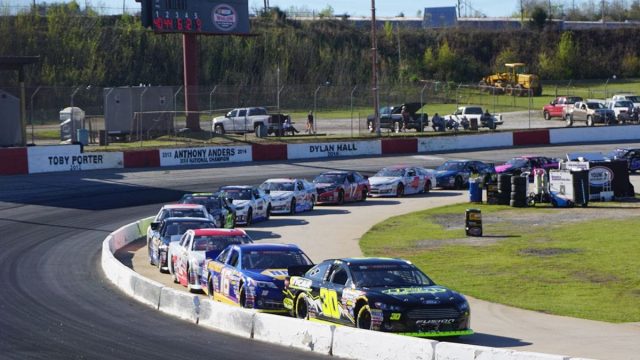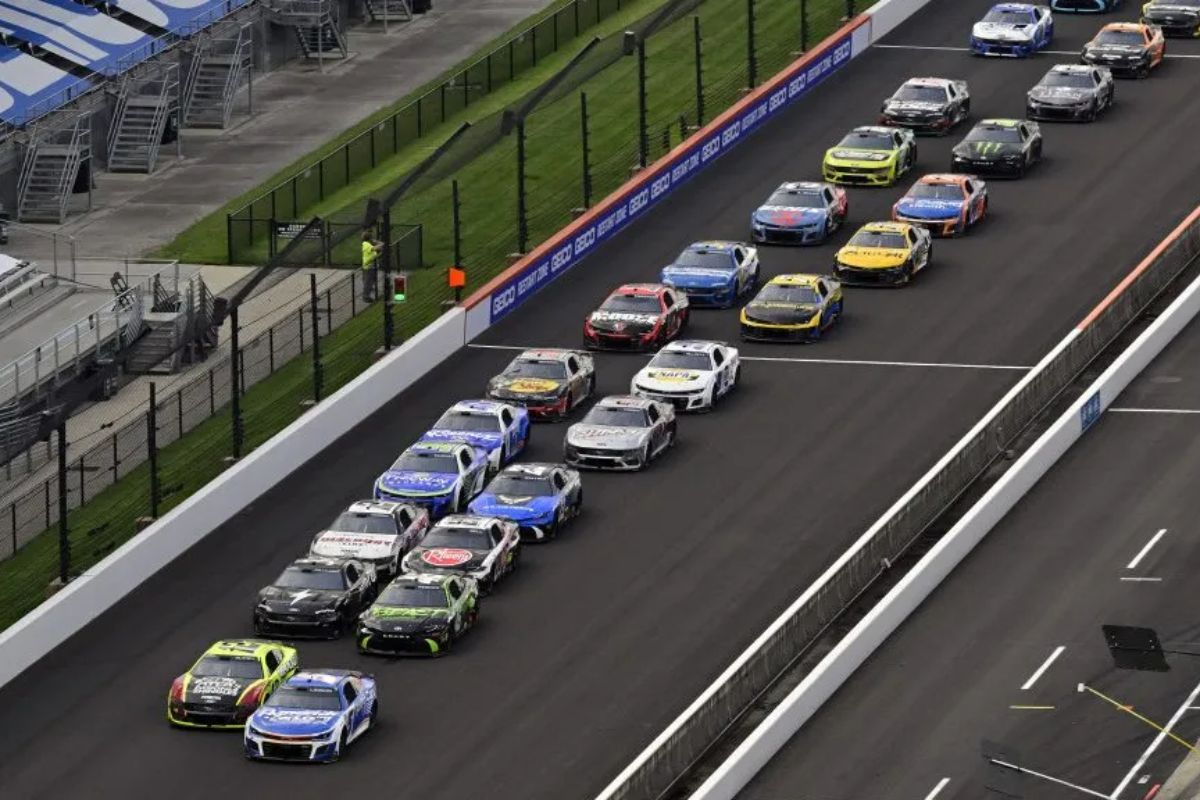NASCAR Focuses on São Paulo for The Clash: NASCAR’s decision to host The Clash in São Paulo emphasizes its tactical pivot towards international markets, yet this choice raises critical questions about the fate of revered American tracks. While the allure of a vibrant Brazilian fan base is undeniable, the potential neglect of classic venues such as Greenville-Pickens and Chicagoland may erode the foundation of NASCAR’s identity. This tension between global aspirations and the preservation of heritage invites a deeper examination of how the sport can honor its legacy while adapting to new landscapes. What implications does this shift hold for the future of NASCAR?
Key Highlights
- NASCAR’s shift to São Paulo aims to enhance global brand visibility, aligning with international motorsport trends.
- The relocation overlooks historic tracks like Greenville-Pickens and Rockingham, which hold significant cultural and racing heritage.
- Classic tracks face challenges such as declining attendance and financial pressures, complicating their revival in the current market.
- Fans express renewed interest in venues like Chicagoland, highlighting a potential conflict between local heritage and global expansion.
International Expansion and The Clash Exhibition
NASCAR’s exploration of international venues, particularly the potential relocation of The Clash exhibition to São Paulo, highlights the organization’s tactical pivot towards global expansion and market diversification in motorsport. This calculated maneuver reflects a broader ambition to engage new audiences and tap into the burgeoning motorsport culture in Brazil, a country with a rich history in racing and a passionate fan base.
The Interlagos circuit, known for its challenging layout and enthusiastic crowds, presents an ideal backdrop for The Clash, which has traditionally served as a showcase of talent and a precursor to the NASCAR season. By introducing this exhibition to international audiences, NASCAR not only improves its brand visibility but also positions itself within the global motorsport landscape, aligning with trends seen in Formula 1 and MotoGP, which have successfully expanded their reach into diverse markets.
Furthermore, this potential relocation signifies a calculated response to shifting demographics and evolving fan interests. As motorsport becomes increasingly globalized, NASCAR’s willingness to adapt and innovate will be vital in maintaining relevance and attracting a new generation of fans.
However, this ambition must be balanced with the preservation of NASCAR’s core values and traditions. The challenge lies in finding a harmonious integration of domestic and international endeavors, ensuring that the sport’s heritage is not overshadowed by its pursuit of growth.
Greenville-Pickens Speedway
Historically significant, Greenville-Pickens Speedway exemplifies the deep-rooted connection between NASCAR and its Southern fan base, serving as an indispensable landmark in the evolution of American motorsport. As the site of the earliest-ever televised flag-to-flag race, this half-mile track hosted 28 Cup Series races from 1955 to 1971, establishing itself as a fundamental component of NASCAR’s heritage. Despite its storied past, the track’s recent closure highlights the tension between preservation and development, as industrial interests encroach upon this cultural icon.
Despite grassroots efforts like ‘Save Our Speedway,’ hopes for the site’s revival remain uncertain. The recent interest in acquiring the property raises questions about the future of Greenville-Pickens, leaving many to ponder the potential loss of a historic venue amidst modern development pressures. The preservation of such tracks is critical for maintaining the authenticity of NASCAR’s Southern roots.
“Currently, there are no plans to remove the track while four industrial buildings and an access road are built nearby. Supporters of the former NASCAR-sanctioned track are still hopeful they can buy or lease it…” – Greenville reported last month
Kentucky Speedway
Kentucky Speedway, once a key player in the NASCAR Cup Series, now stands at a crossroads, with potential for revitalization amid the changing landscape of motorsport. The absence of Cup Series events for four years has cast a shadow over this 1.5-mile track, yet emerging trends suggest a possible resurgence. The introduction of the Next-Gen car has reinvigorated interest in intermediate tracks, positioning Kentucky as a prime candidate for a return to the racing circuit.
Ownership by Speedway Motorsports LLC simplifies the logistical challenges of reintroducing NASCAR events, as the organization’s established relationship with the series mitigates bureaucratic obstacles. Despite its previous struggles—traffic congestion, unexciting races, and declining attendance—there is a renewed appetite within NASCAR for more intermediate venues, making Kentucky’s revival timely. Denny Hamlin’s advocacy for the track highlights its significance to fans and competitors alike.
Moreover, the prospect of a $178 million facility being relegated to a mere rental site for corporate entities like Ford and Amazon is a disheartening narrative for a community that cherishes its racing heritage. NASCAR’s tactical focus on revitalizing Kentucky Speedway could serve as a catalyst for broader engagement in the sport, rekindling local enthusiasm and drawing in diverse audiences.
Rockingham Speedway
Revitalizing Rockingham Speedway, a storied venue in NASCAR’s history, presents both challenges and opportunities as the series seeks to expand its reach in a competitive market. Known affectionately as “The Rock,” this 1.017-mile asphalt oval has a rich legacy, having hosted 42 premier division events since its inception in 1966. However, the last top-tier race occurred in 2013, raising questions about the viability of a return.
The primary obstacle resides in Rockingham’s geographical positioning, nestled within a saturated market of active NASCAR tracks. With five venues within a five-hour drive, the potential for fan engagement and attendance is clouded by logistical congestion. This reality contrasts sharply with NASCAR’s goal of attracting new audiences and diversifying its fanbase.
Nevertheless, recent developments offer a glimmer of hope. The state of North Carolina allocated $9 million in a post-pandemic stimulus package for the track’s renovations, signaling a commitment to restoring this historic site. Rockingham Properties LLC has expressed intentions to make the facility ‘NASCAR-ready‘ by the end of 2024, with plans for a new infield garage and media center underway.
The excitement surrounding Rockingham was amplified when Cup rookie Carson Hocevar hinted at its potential return, indicating a strong desire among fans and stakeholders for a revival. Given its historical significance and the ongoing investment in upgrades, Rockingham Speedway not only deserves consideration but also represents a tactical opportunity for NASCAR to reconnect with its roots while exploring new horizons.
“Rockingham’s coming back, which is really cool. They’re finally gonna take advantage of that one.” – Hocevar
Pikes Peak International Raceway
While Rockingham Speedway seeks to reclaim its place in NASCAR’s landscape, Pikes Peak International Raceway stands as a poignant reminder of missed opportunities in the series’ expansion efforts, particularly in the untapped Colorado market. Once heralded as “the fastest 1-mile paved oval anywhere,” PPIR hosted only a handful of Busch and Truck Series races before its closure to professional racing, leaving a void in NASCAR’s reach.
Key factors that underline PPIR’s importance include:
- Tactical Location: Nestled between Colorado Springs and Denver, PPIR offers unparalleled access to a wide-ranging fanbase.
- Historical Context: The track hosted numerous racing events for nearly three decades, fostering local enthusiasm for motorsports.
- Potential for Growth: With the right investment and a shift in management perspective, PPIR could serve as a cornerstone for NASCAR’s resurgence in Colorado.
The decision to sideline PPIR, particularly after NASCAR and International Speedway Corporation’s contentious exit, has curtailed the series’ visibility in a promising market.
Although the venue now accommodates regional events, car shows, and concerts, the absence of NASCAR racing is a considerable loss for fans. A revival at PPIR would not only reinvigorate local interest but could also signal a tactical pivot towards embracing markets that have historically been overlooked.
Chicagoland Speedway
Chicagoland Speedway, once a cornerstone of NASCAR’s presence in Illinois, now faces an uncertain future amid shifting priorities and market dynamics. Established in 2001, the 1.5-mile tri-oval quickly became integral to the Cup Series, hosting memorable moments like the closest IndyCar finish and the popularization of the “slide job.” However, its prominence has waned due to declining attendance and NASCAR’s exploration of new markets.
The COVID-19 pandemic served as a pivotal moment, with the cancellation of the 2020 race highlighting the track’s vulnerability. This opened avenues for NASCAR to trial alternative formats, such as road courses and the Chicago Street Race, which has generated considerable buzz yet casts a shadow over Chicagoland’s future. Although NASCAR has hinted at a potential return, the partial sale of the track to Hillwood Investment Properties complicates this prospect.
Despite these challenges, a glimmer of hope remains. Fans have shown a renewed interest in classic intermediate racing, and Chicagoland’s unique characteristics—like its aging asphalt—align well with the Next-Gen car‘s performance. This could foster a resurgence in the track’s popularity, provided NASCAR reassesses its decisions post-2025.
With the Chicago Street Race holding a three-year contract, the timeline for Chicagoland’s revival remains ambiguous. The upcoming schedule announcements will be critical in determining whether this storied venue can reclaim its place in NASCAR’s landscape or if it will fade into obscurity.
News in Brief: NASCAR Focuses on São Paulo for The Clash
NASCAR’s pursuit of global expansion through the relocation of The Clash to São Paulo highlights a tactical shift that risks overshadowing the significance of historic tracks such as Greenville-Pickens and Chicagoland.
While the potential for new markets is compelling, the preservation of traditional venues is crucial for maintaining the sport’s heritage and fan loyalty.
A balanced approach that honors the legacy of classic tracks while exploring international opportunities will be fundamental for NASCAR’s sustained success and identity.
ALSO READ: NASCAR in São Paulo: Fans React as The Clash Moves From LA to International Venue



